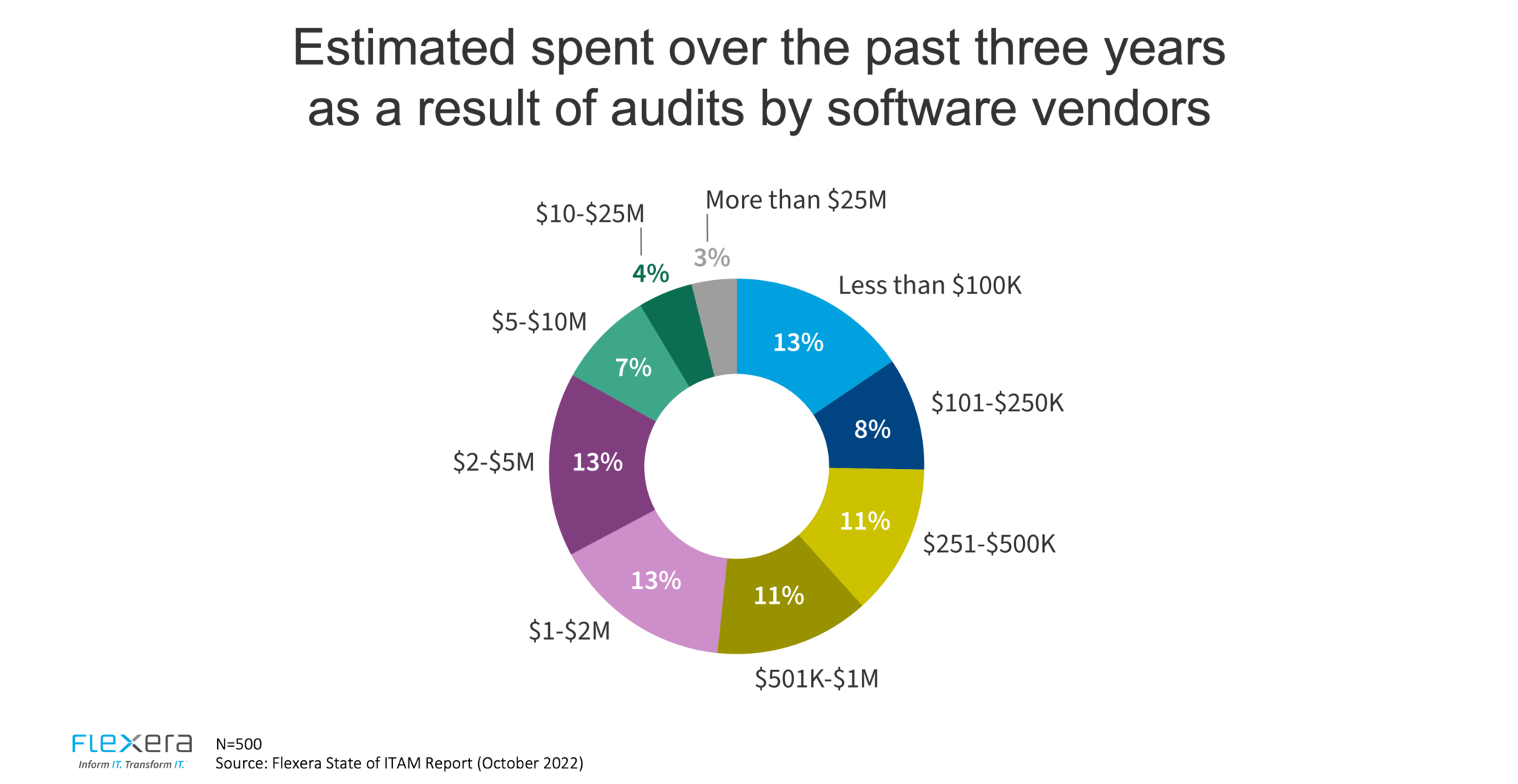The Importance of IT Asset Management: Flexera State of ITAM report
With responses from 500 IT professionals across a range of industries, the report reveals the challenges for ITAM teams across the globe.
Published on 9th November 2022
Digital transformation continues to expand unabated across organizations of all sizes and industries of all categories. With this transformation comes the need for rapid adoption of new technologies and new ways of acquiring and provisioning the resources that implement workloads in order to take advantage of these technologies.
Over the previous few years, we’ve seen a shift in the role and purview of ITAM (IT asset management) practitioners, as they’ve had to adjust to this new world, much of it in the dynamic and agile expanse of the public cloud. This transformation and the disruption left in its wake has continued over the past year, requiring ITAM practitioners to advance their processes and continue to adapt to their evolving IT estates.
This year’s Flexera State of ITAM Report reveals the challenges, initiatives, activities and metrics of success for ITAM teams across the global landscape. The report captures the importance of IT asset management, as it details the responses of 500 IT professionals across a broad spectrum of industries, organization sizes and roles within those organizations. The insights provided by these global respondents provide the big picture of the challenges, strategies and initiatives of ITAM practitioners.
Wasted spend is the broken record of IT
This year’s report reiterates a common theme seen throughout the history of the State of ITAM Report, as well as that of Flexera’s State of the Cloud Reports: Organizations continue to waste a significant amount of IT spend. As organizations pivot away from on-premises configurations and the software required for those environments, and move to the world of public cloud and SaaS (software as a service), their wasted IT spend shows no signs of slowing, regardless of the environment.
This year, global respondents estimated that 38 percent of their desktop software spend is wasted, while 33 percent of their spend in both cloud (IaaS/PaaS) and SaaS is also wasted. Organizations are moving away from the traditional data center model, causing confusion as to how to best plan future IT usage. And as these organizations move into the cloud, these IaaS/PaaS/SaaS environments are new and unproven, so established processes have not been developed to maximize the efficiency of their IT spend and minimize waste.
The role of ITAM is contracting in some areas while expanding in others, and new rules of engagement must be established to combat the wasted spend that continues to be prevalent across organizations.

SAM teams evolve as they mature, but the big things are always the big things
Respondents in this year’s survey were asked about the responsibilities of their SAM (software asset management) teams. Regardless of the maturity of these teams, the primary responsibilities they’re held accountable for all revolve around the same theme—the preparation for, and response to, software vendor audits.
As we have seen throughout the history of the Flexera State of ITAM Report, audits (and attempts to avoid and/or prepare for them) have an outsized presence in many organizations, and this year was no different. Responsibilities such as tracking software licenses, maintaining inventories of used/unused licenses and responding to audits took the top three of four responses regardless of the maturity of the SAM practice.

This seemingly oversized effort on audits comes more clearly into focus when reviewing the responses associated with the fees and penalties incurred by organizations as a result of software vendor audits. In the past three years, 14 percent of respondents estimated they have paid more than $5 million in audit-related fees, penalties and true-ups, and 3 percent have paid more than $25 million.
Audit penalties are typically unbudgeted expenses, so they not only hit the bottom line, they also have a ripple effect across the organization, as those fees come out of the budget of some group (or groups) which hinders their ability to execute on their previously scheduled and funded initiatives.

CCOE interaction on the rise
The report also highlights some good-news aspects of the ITAM space as well. This year, 69 percent of respondents indicated their organization has a cloud center of excellence (CCOE), which helps to guide their adoption of public cloud. Of those organizations with a CCOE, 83 percent have at least one member from the ITAM/SAM team.
As more and more workloads move to the public cloud (and the licensed software needed to power those workloads moves with them), the need to have subject matter experts on software licensing entitlements and restrictions will play an important role in the cost and compliance management of cloud-based workloads.

As with any new technologies, unforeseen challenges will be encountered as these technologies develop and mature. ITAM practitioners will need to continue to be agile so they can adapt to, embrace and manage the complexities of these new technologies. The results of this year’s report provide a view into many of these emerging challenges and how they are being addressed by ITAM teams across industries.
For many more insights into the importance of IT asset management and complete survey results, download the Flexera State of ITAM Report.












